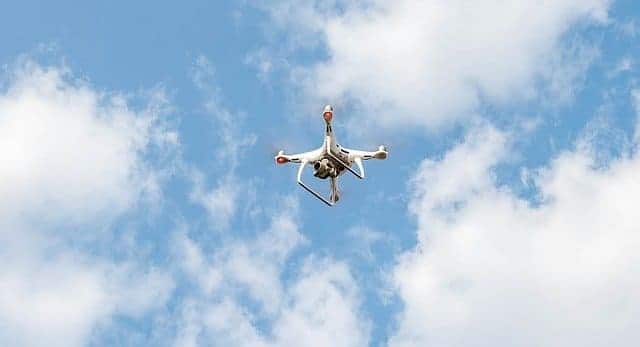How to update drone firmware?
If you’re a drone enthusiast or a professional pilot, staying up-to-date with the latest firmware upgrade steps is essential for maintaining your UAV’s peak performance. Firmware acts as the autopilot of your drone, comprising complex algorithms that pilot the aircraft with precision. By updating UAV software, you can unlock new features, enhance flight stability, and ensure your drone responds well to your command inputs and environmental changes. This drone software update guide offers all the tips and advice you need to conduct this crucial piece of drone maintenance with confidence.
Key Takeaways
- Understand the critical role of firmware in UAV operations.
- Recognize the importance of regular firmware updates for optimal drone performance.
- Follow a pre-update checklist to prepare your drone for maintenance.
- Learn the exact firmware upgrade steps to keep your drone running smoothly.
- Grasp troubleshooting techniques for common software update obstacles.
- Adopt safety measures during the update process to protect your drone.
Understanding Drone Firmware and Its Importance
The heart of any Unmanned Aerial Vehicle (UAV), or drone, lies within its firmware. This specialized form of drone software serves as the unseen pilot, guiding the motors, sensors, and overall functionality of the aircraft. Ensuring that this essential programming is up-to-date is critical for both aircraft safety and overall performance.
What is Drone Firmware?
Drone firmware is essentially the operating system of a UAV—embedded software that controls all aspects of the drone’s flight and functionalities. It’s written to work seamlessly with the drone’s hardware, creating a conduit between the pilot’s commands and the drone’s responsive maneuvers.
Benefits of Regular Firmware Updates
Regularly updating drone firmware comes with a plethora of update benefits. The most significant of these include:
- Enhanced Features: With each update, developers release new functions that can expand the capabilities of your drone.
- Bug Fixes: Updates frequently solve known issues from previous firmware versions, reducing the risk of in-flight malfunctions.
- Improved Functionality: Smooth operation and optimal performance are maintained through regular updates, contributing to the drone’s longevity.
- Increased Compatibility: As technology advances, staying current with updates ensures that your drone works well with the latest peripherals and software applications.
Risks of Outdated Firmware
Ignoring the UAV firmware importance by not keeping it updated can lead to several risks, including:
| Risk Factor | Implications |
|---|---|
| Vulnerability to Threats | Outdated software may expose the drone to security risks or hacking. |
| Reduced Performance | Lagging features and sluggish response times can hamper operational efficiency. |
| Potential for Crashes | Software glitches can cause sudden malfunctions, potentially resulting in a crash. |
| Compatibility Issues | Old firmware may not support new hardware or software, limiting upgrade possibilities. |
Given the central role firmware plays in a drone’s operational integrity, updating it is not merely a suggestion—it’s a necessity for maintaining a high level of safety and overall improved functionality.
The Pre-update Checklist: Preparing Your Drone
Before taking the plunge into the firmware update, a meticulous drone update preparation is essential to ensure a seamless installation process. Here is your ultimate pre-update checklist to get your drone ready:
- Charge the Drone’s Battery: Ensure your drone’s battery is fully charged, or at least above 50%, to prevent any power-related interruptions during the update.
- Secure a Stable Internet Connection: A stable and reliable internet connection is crucial for downloading the firmware files without corruption.
- Backup Important Data: Save all necessary data and configurations, as updates may reset your drone to default settings.
- Check Compatibility: Verify that the firmware version is compatible with your drone model to avoid any compatibility issues.
- Read the Update Notes: Review the release notes for the specific firmware version to understand the changes and improvements included.
Moreover, a thorough assessment of firmware installation prerequisites mitigates the risk of encountering hurdles during the update. The following items are crucial for a successful firmware update:
| Prerequisite | Reason for Necessity |
|---|---|
| Fully Updated Drone App | To ensure smooth communication with the firmware servers during the update process. |
| Memory Card Inspection | A functioning memory card with sufficient space is required for a successful firmware installation. |
| Drone Calibration | A pre-update calibration ensures that sensors are correctly set to interpret the new firmware. |
| Equipment Check | Assess all ancillary devices such as controllers and additional hardware for compatibility. |
| Environment Preparation | Create a controlled environment free from external disruptions during the update. |
Lastly, engage in critical pre-update tasks that involve reviewing the update procedure outlined by the drone manufacturer and allocating adequate time to complete the update without haste.

With this comprehensive checklist, you are now prepared to proceed with confidence, knowing that your due diligence will lead to a successful and effective firmware update for your UAV.
Step-by-Step Guide: How to Update Drone Firmware?
Embarking on a firmware update can be a nuanced task. This guide is designed to navigate you through each phase of the firmware update tutorial, ensuring that your drone receives the necessary improvements for optimal performance.
Finding the Latest Firmware for Your Drone Model
Finding the appropriate firmware for your specific drone model is the first step towards a successful update. Begin by visiting the official website of your drone’s manufacturer. Most manufacturers, like DJI or Parrot, provide a dedicated section for downloading updates. Ensure that the firmware version you select corresponds with the model and series of your UAV. Take note of any special instructions or release notes associated with the firmware.

Downloading and Installing Firmware Update Tools
In many cases, updating your drone’s firmware requires certain UAV software tools provided by the manufacturer. These tools serve as an interface between your computer and your drone, facilitating the transfer of the new firmware to the aircraft’s system. After downloading the necessary tools, ensure that they are properly installed on your computer and that they’re the latest version to avoid compatibility issues during the update process.
Actual Firmware Update Process for Your Drone
Following the preparation steps, you’re ready to execute the actual update. Charge your drone and controller to adequate levels and connect your UAV to your computer, initiating the firmware update tool. The tool should recognize the drone and offer the new firmware file for installation. Here, you’ll follow the firmware installation instructions step by step:
- Transfer the firmware file to the drone, usually by pressing the ‘Update’ or ‘Install’ button.
- Monitor the update progress through the tool’s interface, and avoid disconnecting the drone during this process.
- Once completed, the tool will typically display a notification confirming a successful update.
- Disconnect the drone, and perform a system check to ensure the new firmware is operating correctly.
By adhering to these steps, you will have updated your drone’s firmware efficiently and safely, leveraging the latest technological enhancements for an improved flying experience.
Troubleshooting Common Firmware Update Issues
Despite best efforts, sometimes users encounter firmware update problems when trying to enhance their drone’s capabilities. Whether it’s a stubborn error message or a mysterious glitch, resolving update errors is an important step in maintaining the integrity and functionality of your drone’s software. Below, we delve into some prevalent drone software glitches and outline corrective update steps that can get you back to flying in no time.
One common issue is the drone’s failure to recognize the firmware file, which could stem from a corrupted download or incompatibility with the drone’s current software version. To resolve this, try re-downloading the firmware from the manufacturer’s official website, ensuring your internet connection is stable to avoid any file corruption. If the problem persists, double-check that the firmware version matches your drone’s model and specifications as outlined by the manufacturer.
Another frequent hiccup arises with the firmware update tool itself, which might fail to connect to the drone or the firmware servers. In such cases, verify that you have the latest version of the update tool, and that your computer’s operating system is compatible with the manufacturer’s software requirements. A restart of both your computer and the drone can sometimes rectify any temporal software glitches obstructing the update process.

Sometimes the update process begins but encounters an abrupt halt, indicated by error prompts or a frozen status bar. This interruption could be caused by power issues, so it’s crucial to ensure your drone and controller are adequately charged before commencing updates. If power isn’t the issue, attempt the corrective update steps as follows:
- Disconnect the drone and close the update tool.
- Restart your drone and reconnect it to the update tool.
- Initiate the update process again, closely monitoring the progress for any specific error messages.
Should the errors continue, consulting the drone’s support forums or contacting the manufacturer’s tech support can provide more tailored solutions to your specific firmware update problems. Sometimes, a little expert insight is what’s required to sort through the complexities of drone software updates.
In conclusion, while various firmware update problems may arise, understanding the potential issues and having a systematic approach for resolving update errors can help you overcome drone software glitches. Remember to follow the recommended corrective update steps carefully, and your drone will be ready to soar with the latest software enhancements.
Drone Firmware Update Safety Tips
Ensuring a safe firmware update is crucial in maintaining not just the performance but the very integrity of your UAV. Safety during these updates is a multiphase process, encompassing everything from a secure environment to careful battery monitoring. These measures safeguard your drone from potential mishaps and fortify the success rate of firmware installations.
Ensuring a Safe Environment for Updates
Setting up a protected space for conducting firmware updates is one of the foundational update safety measures. This means selecting an area free from external interruptions and ensuring that the work surface is stable and clean. Interruptions can disrupt the update process, increasing the risk of failure that may compromise your drone’s functionality. A dedicated, calm environment is key to a focused and successful firmware transition.
Battery Considerations Before Updating
When dealing with intricate electronic devices like drones, drone battery safety cannot be overstated. A firmware update demands a significant amount of power; hence, ensuring a completely charged drone battery before beginning the update is paramount. It eliminates the possibility of the drone shutting down mid-update, which could lead to corrupt software or, worse, damage to the hardware. Always check battery health and charge levels to adhere to safe power management practices.
After-Update Verification Checks
Completing an update is just one part of the process; conducting thorough post-update procedures confirms the proper functioning of the firmware. This involves running diagnostics to check system stability and verifying if new features are working as advertised. These post-installation assessments are critical update safety measures, as they ensure no anomalies were introduced during the update, guaranteeing your drone operates safely and efficiently in its next flight.






